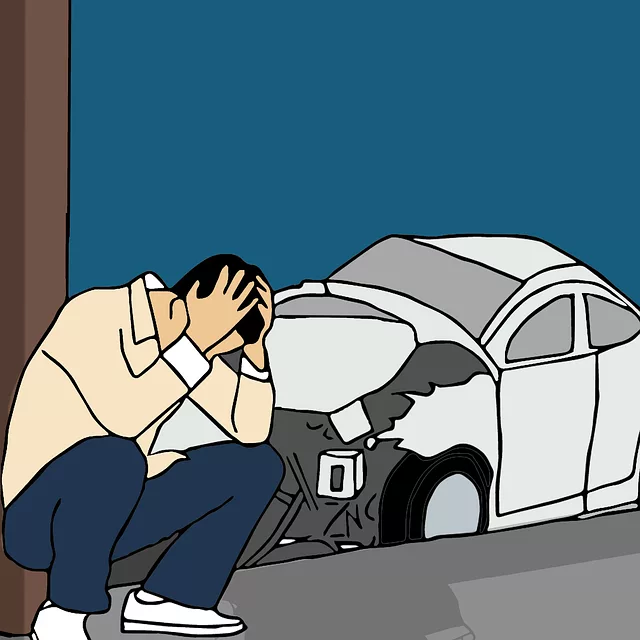Comprehensive insurance offers vehicle owners a robust safety net against a wide array of potential car damage scenarios, including theft, natural disasters, vandalism, and accidental collisions with animals or road obstacles. Unlike liability insurance that primarily covers third-party accidents, comprehensive insurance provides protection for specific incidents arising from everyday driving experiences. It is crucial to understand the policy's exclusions and limitations, such as activities like driving under influence or neglect. Choosing comprehensive insurance allows drivers to safeguard their vehicles, maintain peace of mind, and avoid unexpected bills for repairs or replacements. Smart strategies for reducing costs include policy bundling, clean driving records, and regular coverage reviews.
In today’s world, protecting your vehicle is more crucial than ever. Comprehensive insurance offers an extensive safety net for car owners, covering a wide range of incidents beyond typical accidents. This article serves as your ultimate guide to understanding comprehensive insurance, its benefits, and how it differs from collision or liability coverage. We’ll explore real-life scenarios, common exclusions, and tips to navigate claims smoothly. Discover strategies to choose the right protection, reduce costs, and ensure your vehicle’s longevity.
Understanding Comprehensive Insurance: What It Covers

Comprehensive insurance is a type of vehicle coverage that offers peace of mind by protecting against a wide range of potential risks and damages. Unlike liability insurance, which primarily covers accidents caused to others, comprehensive insurance is designed to safeguard your own car in various situations. This includes protection from theft, damage due to natural disasters like floods or storms, vandalism, and even accidental damage such as collisions with animals or hitting a road obstacle.
When you have comprehensive insurance, you’re not just insured against the obvious; it also covers specific incidents that can occur during everyday driving experiences. For instance, if your car is damaged by falling debris from another vehicle ahead of you on the highway, or if your vehicle suffers wear and tear due to extreme weather conditions, comprehensive insurance will step in to assist with repair or replacement costs. This all-encompassing coverage ensures that unexpected events won’t leave you burdened with substantial auto repair bills.
Advantages of Comprehensive Car Protection

Comprehensive car protection, often bundled under comprehensive insurance policies, offers a robust safety net for vehicle owners. Unlike collision coverage that primarily focuses on damages from accidents, comprehensive insurance safeguards your car against a wide range of risks, including theft, vandalism, natural disasters, and animal-related incidents. This broader coverage provides peace of mind knowing that unexpected events won’t leave you burdened with massive repair bills.
One significant advantage lies in its ability to protect your investment. Comprehensive insurance can help replace or repair your vehicle, ensuring it remains in excellent condition. Moreover, it often includes rental car coverage during the repair period, eliminating the stress and financial strain of arranging alternative transportation. This level of protection is invaluable for anyone who relies on their vehicle daily for work, errands, or leisure activities.
Common Exclusions and Limitations

Comprehensive car insurance is designed to protect against a wide range of risks, but it’s essential to understand its common exclusions and limitations. While comprehensive coverage typically includes protection from damage caused by theft, vandalism, natural disasters, and even flooding, there are often specific scenarios that are not covered. For instance, many policies exclude damage resulting from driving under the influence or neglect, such as leaving a car unlocked in an unsafe area.
Additionally, certain high-risk activities or vehicles may be excluded from comprehensive insurance. This includes events like racing, drag stripping, or using your vehicle for off-road purposes. Some companies also have restrictions on specific types of vehicles, such as classic cars or luxury vehicles, which might require specialized coverage options. Always review the policy documents carefully to comprehend what’s covered and what’s not, ensuring you’re adequately protected based on your driving habits and vehicle type.
Choosing the Right Coverage for Your Vehicle

When it comes to protecting your vehicle, choosing the right coverage is paramount. Comprehensive insurance stands out as a crucial option, offering protection against a wide range of risks beyond typical accidents. This includes damage from natural disasters like floods or hailstorms, as well as issues arising from theft or vandalism.
Understanding your specific needs and risk factors is essential in selecting the ideal comprehensive insurance plan. Consider factors such as your vehicle’s age, make, and model, along with your driving history and the areas where you frequently commute. By carefully evaluating these aspects, you can tailor your coverage to ensure optimal protection for your investment.
How to File a Claim

When filing a claim under your comprehensive insurance policy, the first step is to contact your insurance provider as soon as possible after the incident. This ensures prompt action and helps prevent any potential delays in the claims process. During this initial call, provide all relevant details about the accident, including the date, time, location, and a brief description of what happened. Your insurer will guide you through the next steps, which typically involve reporting the incident to the authorities if necessary and documenting any damage to your vehicle with photographs or videos.
After gathering this information, submit a formal claim by filling out the appropriate forms provided by your insurance company. These forms usually require detailed descriptions of the incident, the extent of damage, and any relevant personal information. Be sure to keep copies of all documents for your records. Your insurance provider will then assess the claim, verify the details, and contact you with a decision regarding coverage and the next steps, which may include repairs, replacements, or reimbursement for eligible expenses.
Top Tips for Reducing Premium Costs

Reducing your comprehensive insurance costs doesn’t have to be a challenge. One effective strategy is to bundle your policies. Many insurers offer discounts when you combine auto, home, and life insurance under one roof. Another tip is to maintain a clean driving record. Traffic violations and at-fault accidents can significantly increase premiums, so staying accident-free will save you money in the long run.
Regularly reviewing your coverage options is also key. As your needs change, your insurance policy should too. For example, if you’re retired and drive less frequently, a usage-based insurance plan might be suitable, as it charges based on actual driving miles. Additionally, consider increasing deductibles for comprehensive and collision coverage. While this means you’ll pay more out of pocket in the event of a claim, higher deductibles often lead to lower monthly premiums.
Comprehensive vs. Collision vs. Liability: Comparison

When considering car protection, understanding the differences between various insurance types is crucial. Comprehensive insurance covers a wide range of damages beyond collisions, including theft, vandalism, and natural disasters. It’s designed to protect you from unexpected events that could leave your vehicle damaged or totaled. On the other hand, collision insurance specifically covers damage resulting from accidents, whether it’s with another vehicle, a pedestrian, or a fixed object. While it’s typically required by law, comprehensive insurance offers added protection for scenarios not involving collisions.
Liability insurance, while essential in most places to drive legally, only covers damages you may cause to others’ vehicles or properties in an accident, as well as medical bills for injured parties. It does not protect your own vehicle. Comprehensive and collision insurance, in contrast, are optional but provide more comprehensive coverage. Comprehensive offers peace of mind by safeguarding against a broader spectrum of potential risks, making it a worthy investment for many drivers.
Real-Life Scenarios and Their Impact on Claims

In real-life scenarios, comprehensive insurance plays a pivotal role in safeguarding against unforeseen events that can significantly impact vehicle owners. Imagine a driver navigating through a busy city street when a reckless motorist veers into their lane, causing a collision. Without comprehensive coverage, repairs or replacements might not be readily available, leading to financial strain and potential delays. Comprehensive insurance, however, steps in to cover these incidents, ensuring drivers are protected against the costs associated with such accidents.
Another scenario could involve severe weather conditions, like a heavy storm or flooding, damaging a vehicle parked outdoors. Regular insurance policies often exclude coverage for such natural disasters. But comprehensive insurance packages specifically cater to these events, providing peace of mind and financial security when it matters most. By offering protection against a wide range of perils, comprehensive insurance is an indispensable tool in managing the unpredictable nature of everyday life and its potential effects on one’s vehicle.
The Importance of Regular Review and Updates

In the ever-evolving landscape of automotive technology and safety features, staying up-to-date with the latest advancements is paramount for comprehensive car protection. Regularly reviewing and updating your vehicle’s insurance policy ensures that you’re not left behind in terms of coverage. Comprehensive insurance isn’t just about protecting your car from external hazards; it’s about being prepared for unforeseen circumstances that may arise due to changing road conditions, new safety regulations, or advanced security needs.
A thorough review allows you to incorporate emerging technologies such as accident prevention systems, enhanced driver-assistance features, and improved data security measures into your policy. By doing so, you’re not just safeguarding your investment; you’re also ensuring peace of mind knowing that your comprehensive insurance keeps pace with the rapid advancements in the automotive industry.



